Farm Life Journal - September 2019
September 6, 2019
By Tom Oswald
Since I last wrote, it has been a time of incredible highs and really sad lows. If you read along, I’ll share some of both.
In last month’s Farm Life Journal, I noted that Susanne and I were looking forward to some time away for just us in August. I often travel for meetings depending on my service in state and national soybean organizations. For example, this month I’ll be St. Louis for a meeting with Bayer, who acquired Monsanto in a merger, to discuss crop challenges and the future of farming soybeans. A few weeks ago, I joined a few other United Soybean Board members and staff to meet with Corteva Agriscience.
In the eyes of some of some farmers I know, a trip might seem like a vacation. But for those of you who spend time on the road for business know being away from home is tiring. Farmers I know that serve on various boards will often say it’s harder than working because days spent with travel and meetings seem to take two days to catch-up and aren’t part of a daily routine on the farm... even though a daily routine is hard to define these days.
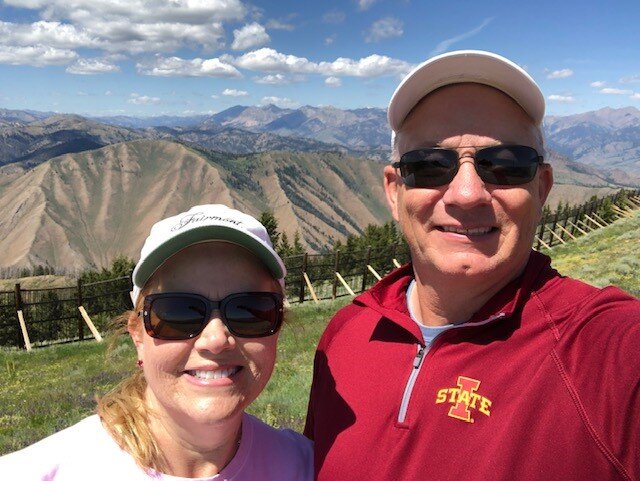 August is an important month for Susanne and me due to some traditions. Taking a trip to the Iowa State Fair is always a tradition, and if we can, we like to take a week exploring somewhere in this great country… often somewhere with mountains, forests and spaces we haven’t seen. This year it was a swing through central Idaho and it was certainly one of the high moments this month.
August is an important month for Susanne and me due to some traditions. Taking a trip to the Iowa State Fair is always a tradition, and if we can, we like to take a week exploring somewhere in this great country… often somewhere with mountains, forests and spaces we haven’t seen. This year it was a swing through central Idaho and it was certainly one of the high moments this month.
Stanley, Idaho is a place known to get really cold in winter. Maybe that’s why it isn’t a very large town. But it was a fun place to stay for a night. There’s a lot of river rafting in this area. We did shorter 3 to 5-mile day hikes into the mountains. The scenery is worthy of the effort.
Idaho has always been a curiosity for me. When I was a kid, my cousin Doug was studying forestry and spent a summer in a watch tower overlooking the forests of Idaho in the Salmon-Challis National Forest. Though it was probably 50 years ago, I remember watching his slide show from that adventure. It was so remote that it took a 20-mile jet boat ride and 12 miles by horse or foot just to get to the tower. That tower is now gone when the area became part of the Frank Church Wilderness. I think of Doug as “my Iowa State University cousin,” as he was the first of my family to go there. Doug is now retired from a career in the outdoors working in the forestry industry and later as a wildlife and resource officer for the state of Washington. He is an incredible wildlife and scenic photographer.
One thing I learned about Idaho during our visit is that there are lava fields as well as a nuclear research facility there.
Of course, being the farmer I am, I had to see the potato museum. We raise a few in the garden but seeing field-scale production along the road and history in the museum was quite the treat from this state that’s often confused with our own state. They have one big potato outside the museum housed in an old railway station.
Our vacation needed to be cut short as we had to get home early. But our last day was spent touring around Twin Falls and areas along the road back to Boise. The Shoshone Falls were beautiful, the jump site for Evel Knievel’s failed attempt at jumping the canyon was interesting for me, as I was a kid at the time of his antics, and bits of the Oregon Trail closed out our sightseeing. The state we found on our fast slice through Idaho was much more diverse and interesting than I expected. We really liked it.
Meanwhile back home, the corn is making progress. It should be mature before a normal killing frost. Farmers like to see a dry husk on a green healthy plant as the corn matures. We look at the milk line (contrast in color of the grain) to see how close kernels are to being packed full.
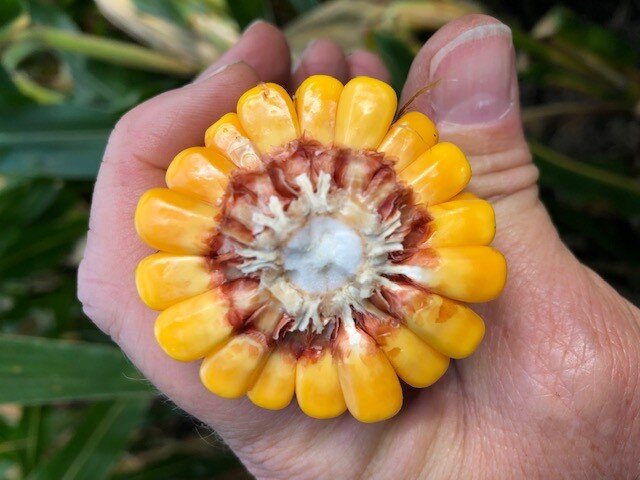
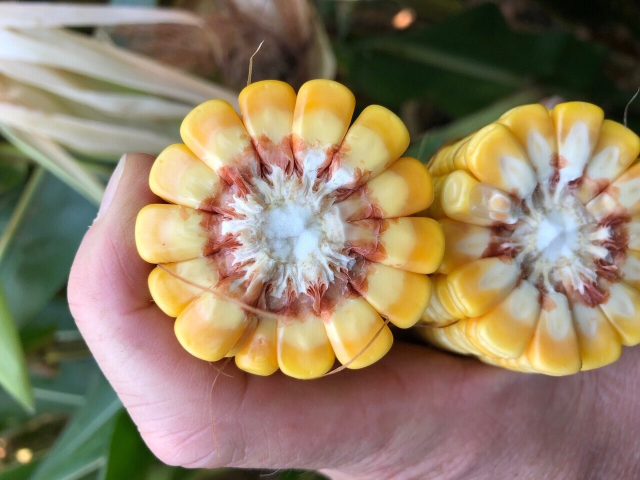
In the photos above you can see one hybrid variety has almost no milk line indicating it is near maturity, while the other photo from a later maturing hybrid shows a light yellow (unfilled) vs. darker yellow (filled) color line about half way down the kernel. The germ of the kernel is visible in the bottom of the photo. With the milk line about half way down, this hybrid should be frost safe in a couple weeks.
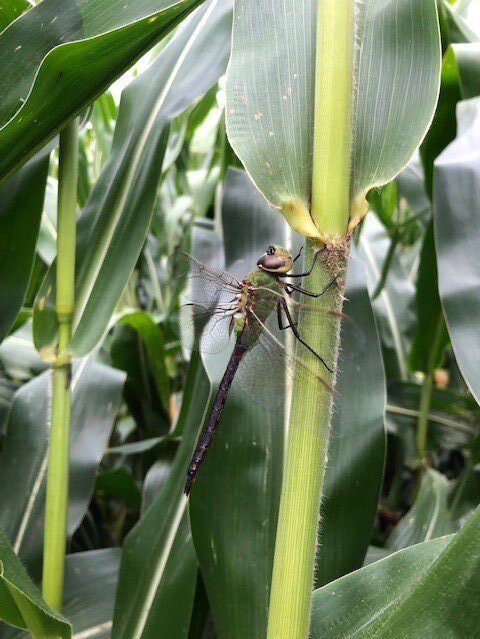 However, the question remains how much dry down will occur in the field and how much grain drying at the bins will be needed to have it safe for storage. One thing you find different between hybrid genetics – though corn will always have an even number of rows around – different hybrids will have different numbers of rows as determined by the genetics of the plant and the stresses to that plant during the season. Kernel counting is one way people try to estimate yield. There can be quite a bit of room for error, but it’s an estimate. I usually evaluate the plant-to-plant consistency, the health of the plant, and a little fudge factor to see if I move off my starting point… it’s an average. Considering all the things that have gone on this season, I’ll stick with “average” for now. There’s a certain “high” to the anticipation of harvest when it looks like the crop will make it.
However, the question remains how much dry down will occur in the field and how much grain drying at the bins will be needed to have it safe for storage. One thing you find different between hybrid genetics – though corn will always have an even number of rows around – different hybrids will have different numbers of rows as determined by the genetics of the plant and the stresses to that plant during the season. Kernel counting is one way people try to estimate yield. There can be quite a bit of room for error, but it’s an estimate. I usually evaluate the plant-to-plant consistency, the health of the plant, and a little fudge factor to see if I move off my starting point… it’s an average. Considering all the things that have gone on this season, I’ll stick with “average” for now. There’s a certain “high” to the anticipation of harvest when it looks like the crop will make it.
For those who feel our farming practices and GMO plants make for a sterile environment, I think this dragon fly that startled me as it was at eye level while I was out checking corn seems to be doing just fine.
As I said earlier, there have been lows this month and they are big ones… one will be a financial hit, the other is the loss of a friend and colleague.
I noted in last month’s Farm Life Journal, that farmers watch for diseases and use crop insurance to help protect us when something goes wrong. Some of my soybeans have been killed by the now-untreatable disease, Sclerotinia White Mold.
Though I thought I had taken some appropriate moves to manage the disease, it’s clear I didn’t do well enough. It is quite possible this will take our soybean yields down into crop insurance territory. The insurance will help ease the financial blow, but the profit on this field of soybeans is likely gone. The insurance reduces the risk of going broke but doesn’t make for profit.
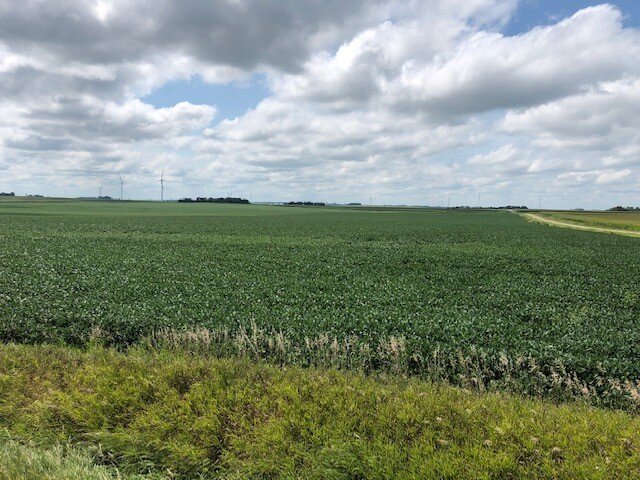
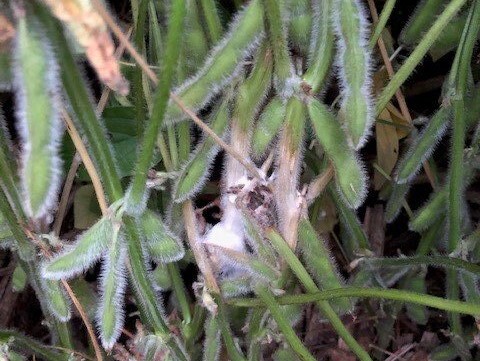
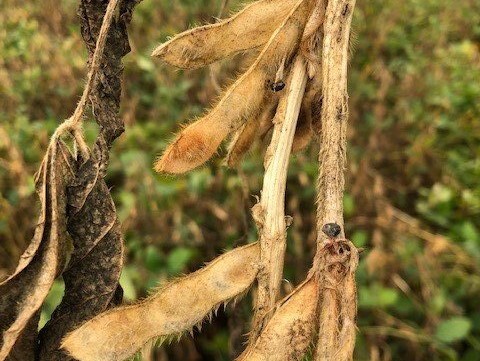
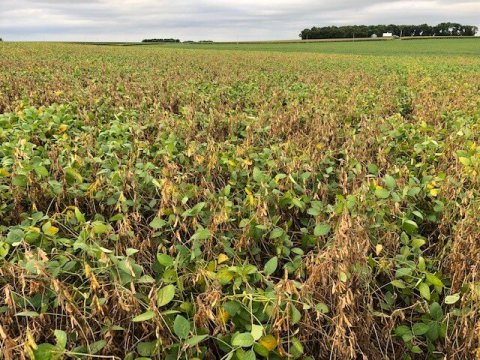
The low that comes from seeing your field die prematurely is a psychological one. The first photo is of the field on August 18. It was beautiful with the potential to do average, maybe better. Considering the challenge, we’ve had this year, that’s not bad.
Then I noticed a plant with white mold on August 24 which foretold a much bigger problem. The disease infects the plant much earlier in the season, but you can’t see it. It then develops into a structure that plugs the vascular system eventually emerging from the side of the plant as white fuzz from a black sclerotium. Though harmless to humans, the infected plant dies and doesn’t fill the pods correctly. Yield can be severely impacted. It’s a kick in the head. I’ve started to turn the corner on this downer as I am developing a plan to aggressively fight this problem when this field is in soybeans in 2021. That’s what we have to do in farming… suck it up and fight on
Though we’ve dealt with crop diseases in the past and will into the future, there’s nothing like the surprise loss of a dear friend or family member.
While on vacation, we learned that a farmer I served with for more than 15 years in the soybean world had died from an accident on his farm. Dean Coleman and his wife Carol of Humboldt were friends as well as colleagues. In some respects, he was like a brother to me, someone I’d hoped to grow old in agriculture with. You can read more about Dean’s legacy here.
May your thoughts and prayers be with his family as they work to harvest their first crop without him. They are wonderful people. To give you a sense of the family, Wallaces Farmer recently featured their work with the Adopt-A-Farmer program and Carol was recently selected as a 2019 Iowa Master Farm Homemaker. I miss my friend.
Finally, a bit of wisdom I saw while my wife was shopping at The Farmer’s Daughter in Idaho.
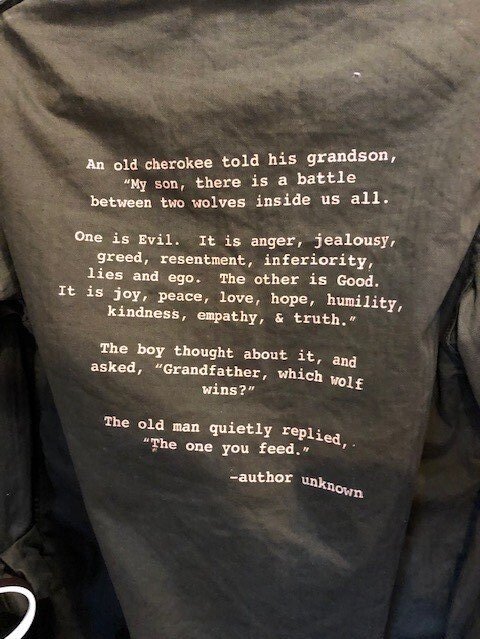
Till next time, when we should be seeing some harvest activity.
Be safe out there.
Tom